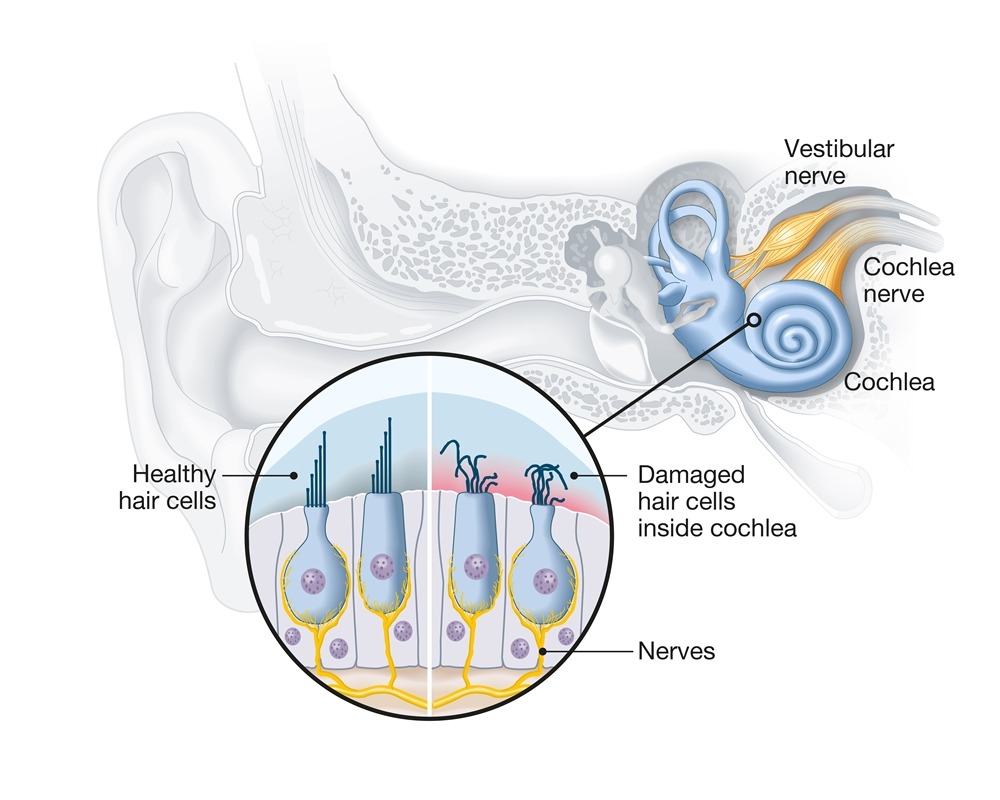Sensorineural Hearing Loss

The cochlea part of the inner ear consists of tiny little hair cells that respond to the sound around us. Over time and with age the number of hair cells in our ears reduces or stop functioning, resulting in a loss.
It is usually the high frequencies that are affected first and that is why the older you get the more you might struggle to hear birds singing or when someone is at the door. Age related hearing loss is known as presbycusis and hearing aids can help you to regain clarity at the frequencies that you can no longer hear.
Conductive Hearing Loss
This is when there is a barrier to the sound being transferred to the nerves of hearing. This type of loss can occur with damage due to infection or can be self-inflicted. If you regularly push cotton buds into your ears, for example, there is a risk of perforating the eardrum.
With a hole in the eardrum, the sound can’t transfer through to the inner ear efficiently and therefore, needs to be much louder in order to be heard. Hearing aids may be suitable if you have a dry perforation and quite often small perforations can heal naturally. If you feel your hearing is reduced due to ear wax blocking your ears, it is safer to get your ears cleaned by Microsuction.

Mixed Hearing Loss

Mixed hearing losses occur due to a combination of nerve damage and structural issues. If you are regularly exposed to loud noise, this can result in damage to the hair cells in the inner ear leaving you with a sensorineural element to your hearing loss. If at the same time you were to experience acoustic trauma due to a sudden burst in sound from e.g. a loudspeaker, you may also end up with a hole or perforation in your drum. This combination results in a mixed loss. For this reason, it is always safer to prevent premature loss by using ear protection.
